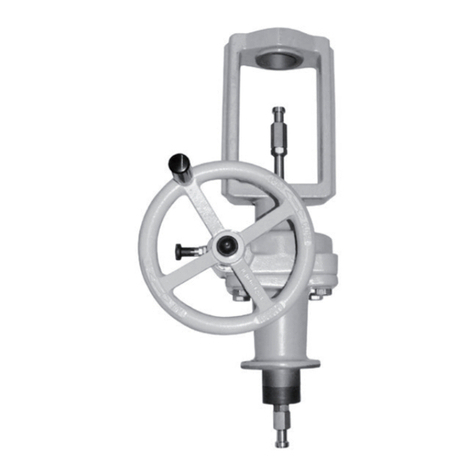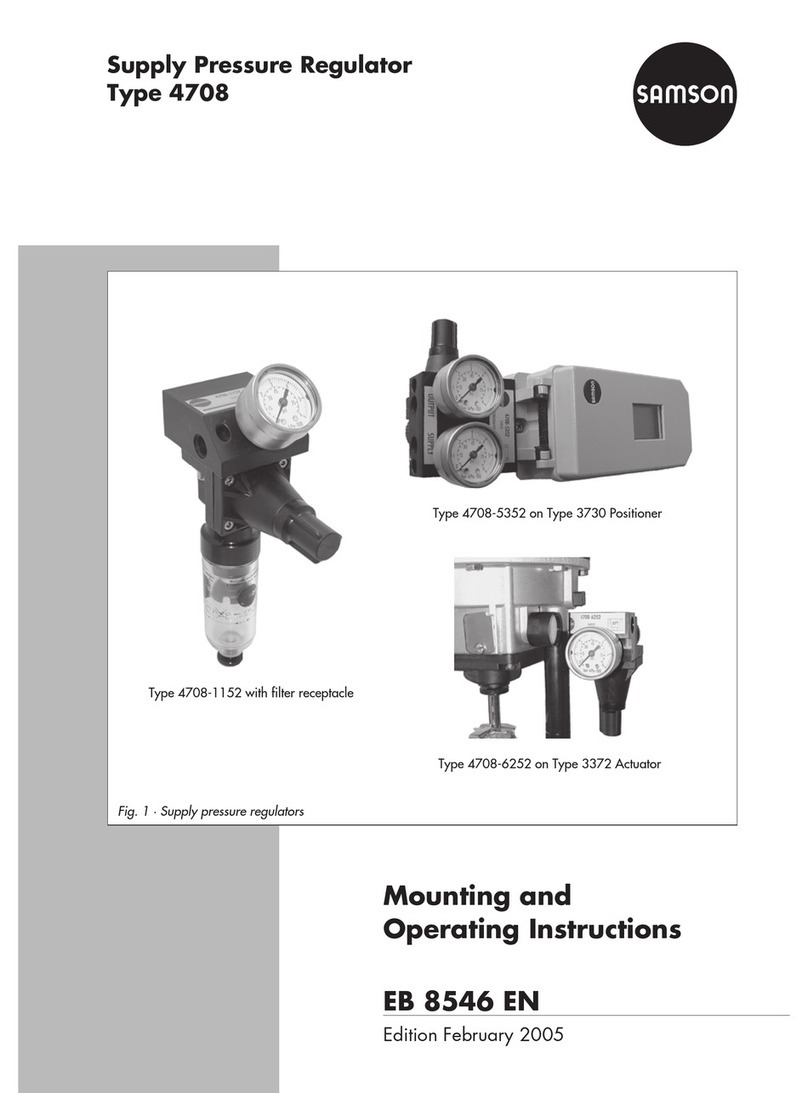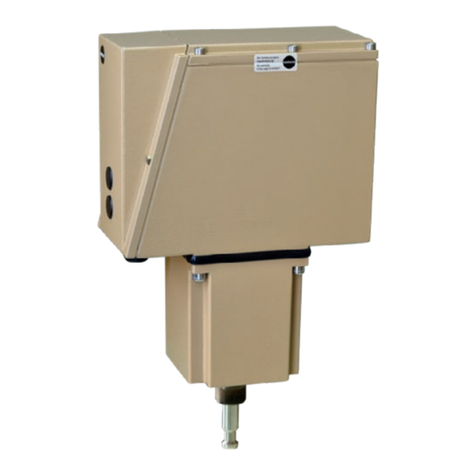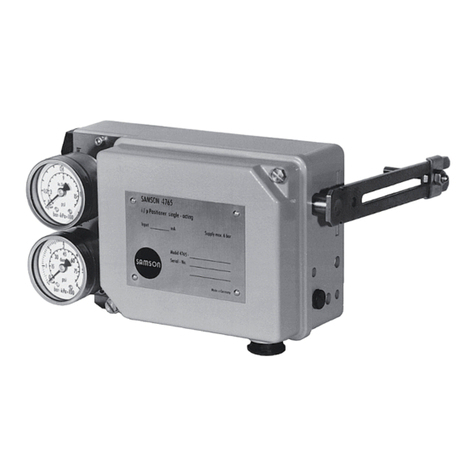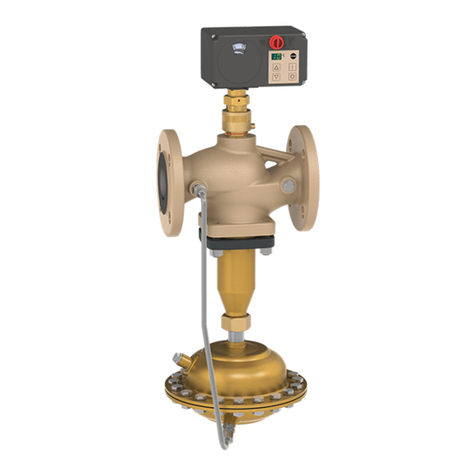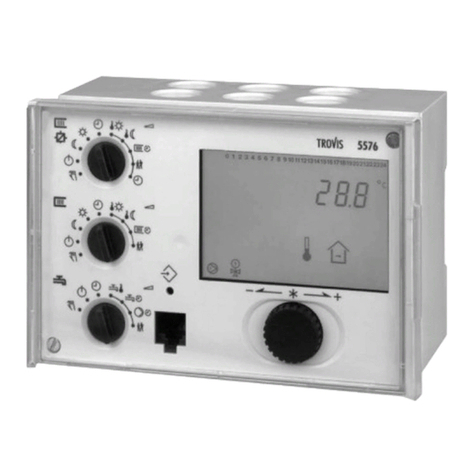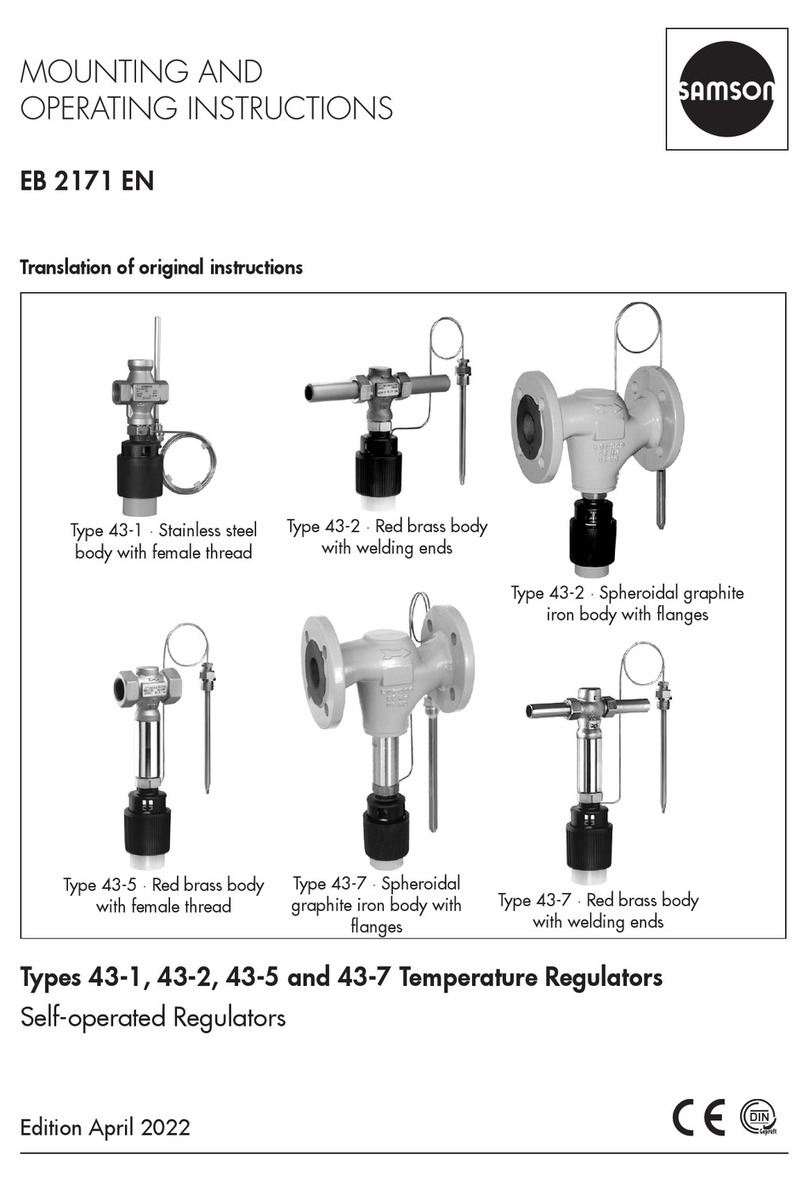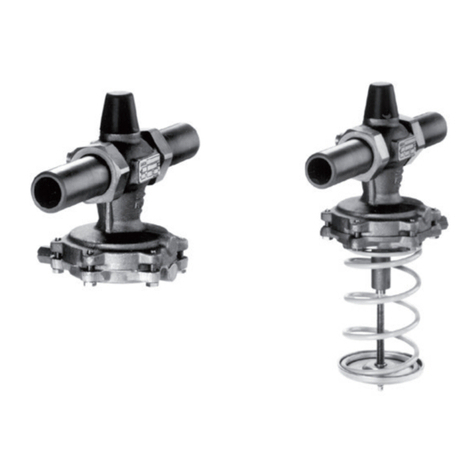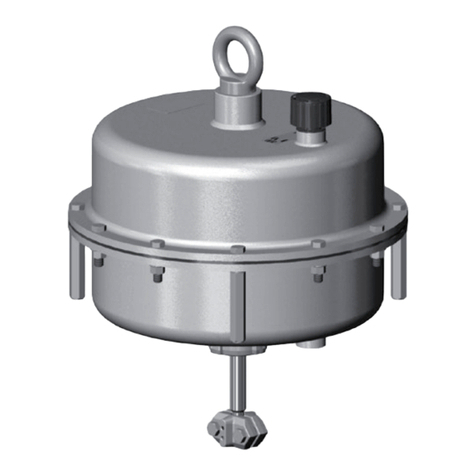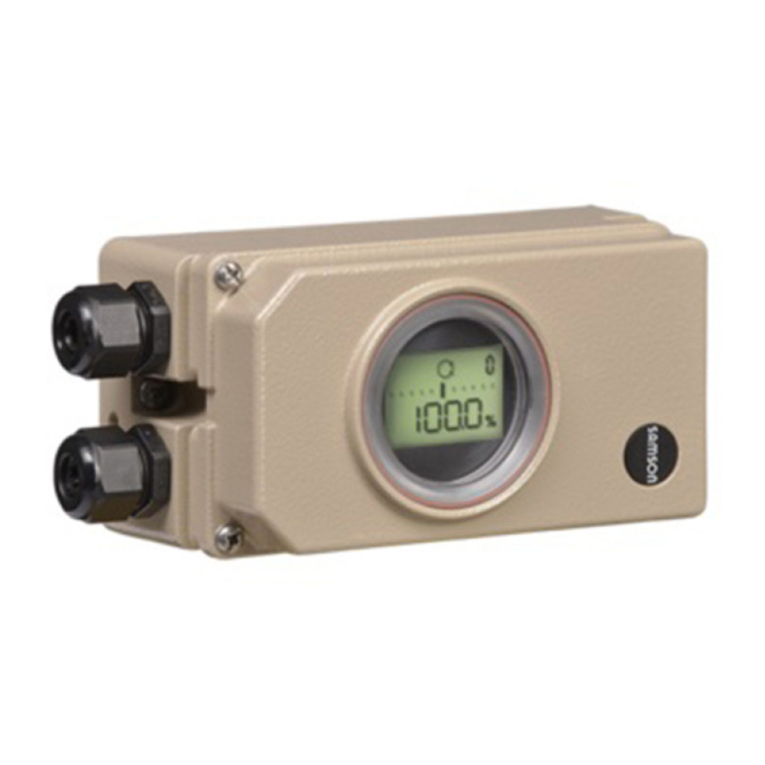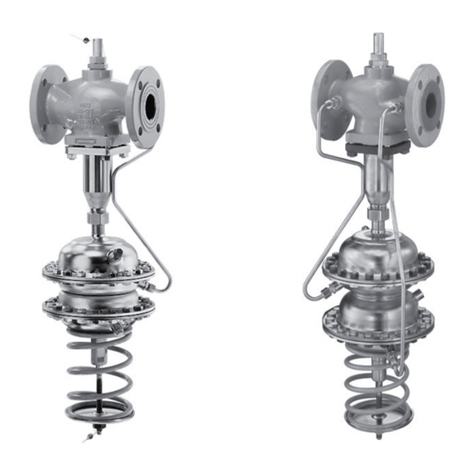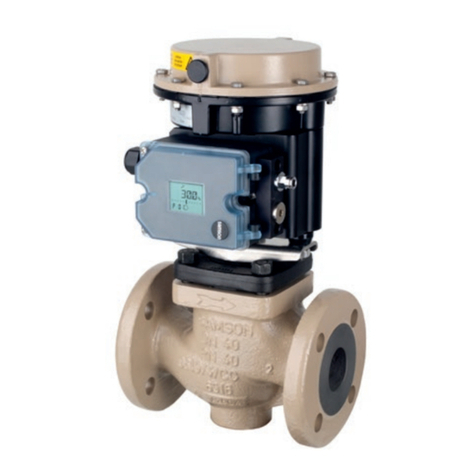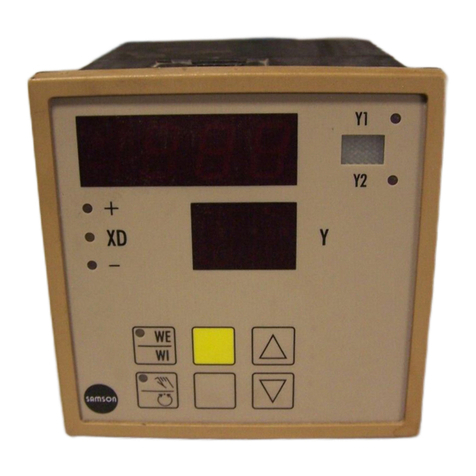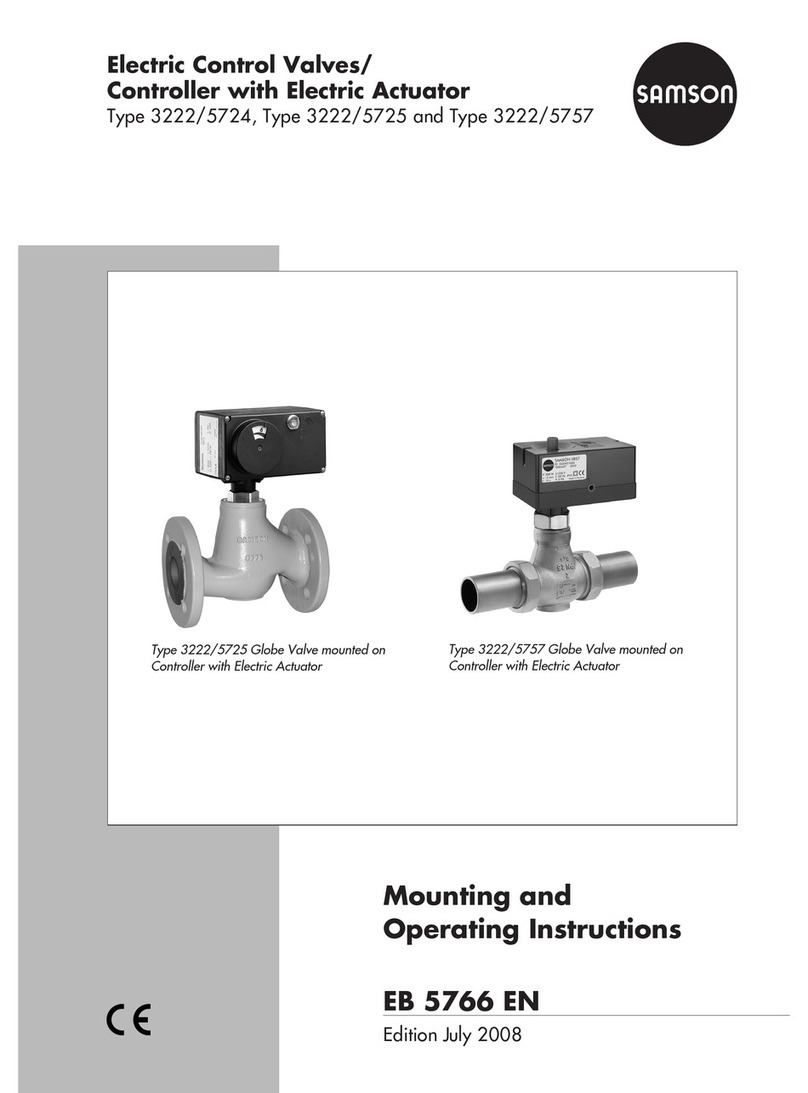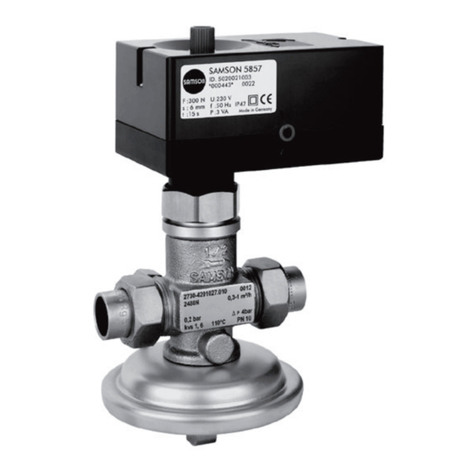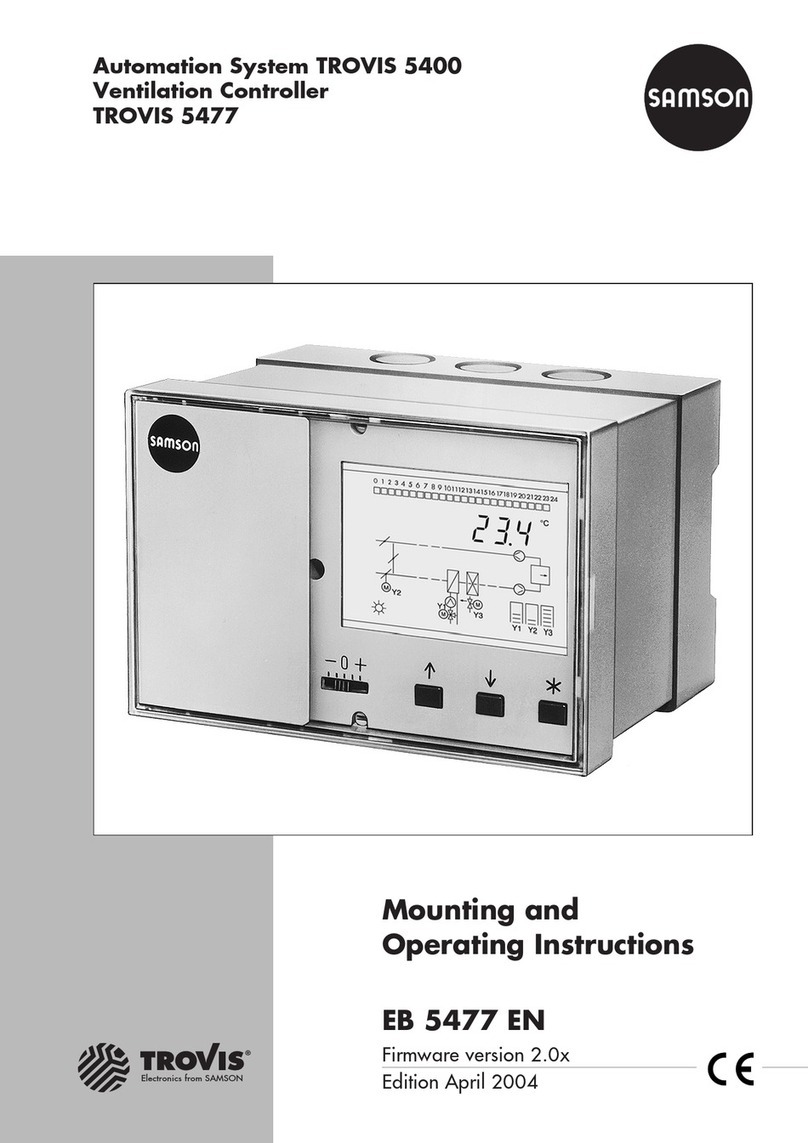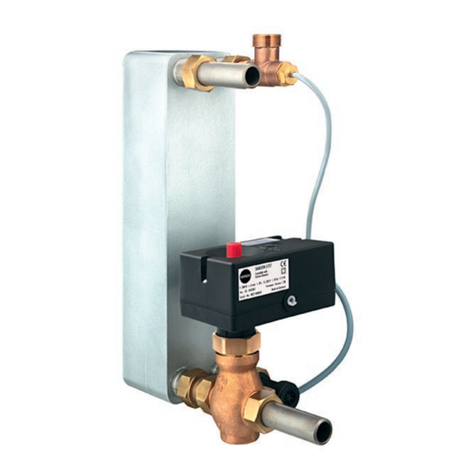
1 Design and principle of
operation
The regulators limit the flow rate in the pipe-
line. The set point for the flow rate is adjusted
at the restriction and the set point for the dif-
ferential pressure or the downstream pressure
is adjusted at the actuator. The largest signal
is always used to actuate the valve.
The regulators mainly consist of the
Type 2423 Valve with seat, plug and restric-
tion together with the Type 2427 or
Type 2429 Closing Actuator with operating
diaphragms. Valve and actuator are deliv-
ered separately and must be assembled on
site using a coupling nut
The medium flows through the valve in the di-
rection indicated by the arrow. The position
of the restriction (1.1) and the area released
by the valve plug (3) determine the flow rate
and the differential pressure Δp across the
plant.
The valve is fully balanced. The forces acting
on the valve plug created by the upstream
and downstream pressures are balanced by
a balancing bellows (5) or balancing dia-
phragm (Type 2423 balanced by a dia-
phragm, DN 125 to 250).
The principle of operation of the regulators
with valves balanced by a bellows or dia-
phragm only differ concerning the pressure
balancing. The valves balanced by a dia-
phragm have a balancing diaphragm (Fig. 2)
instead of a bellows (Fig. 1). The downstream
pressure p2acts on the inside and the up-
stream pressure p1on the outside of the dia-
phragm. As a result, the forces acting on the
valve plug are balanced out.
Type 42-37: The high pressure of Δp is trans-
mitted through the control line (18) to the dia-
phragm chamber D. The high pressure of the
flow rate (V
.) upstream of the restriction (1.1)
is transmitted through the control line (19) to
the diaphragm chamber C. This pressure is
equal to the low pressure of Δp. The low pres-
sure of V
.downstream of the restriction is
transmitted through holes in the plug and dia-
phragm stems to the diaphragm chamber A.
If, for example, the differential pressure rises,
the positioning force at the bottom operating
diaphragm (13.2) rises, too. This change in
force causes the diaphragm stems (12.2 and
12.1) and the valve plug (3) to move in the
closing direction until the set point adjusted at
the set point spring (16) is reached.
If the flow rate increases, the differential pres-
sure at the restriction (1.1) and the resulting
positioning force at the top diaphragm (13.1)
increase. This change in differential pressure
at the restriction causes the top diaphragm
stem (12.1) to push the plug stem and the
valve plug (3) in the closing direction until the
adjusted flow set point is reached. The largest
signal is always used to actuate the valve.
The overload protection (force limiter with in-
ternal excess pressure limiter) (15) protects
the seat, plug and plant during extreme oper-
ating conditions against overloading.
Type 42-39: The principle of operation is al-
most the same as for Type 42-37. However,
the high pressure of the flow rate V
.is sepa-
rate from the low pressure of the differential
pressure Δp in the Type 2429 Actuator. The
diaphragm chambers for these pressures
have their own control line connections.
4EB 3017 EN
Design and principle of operation
